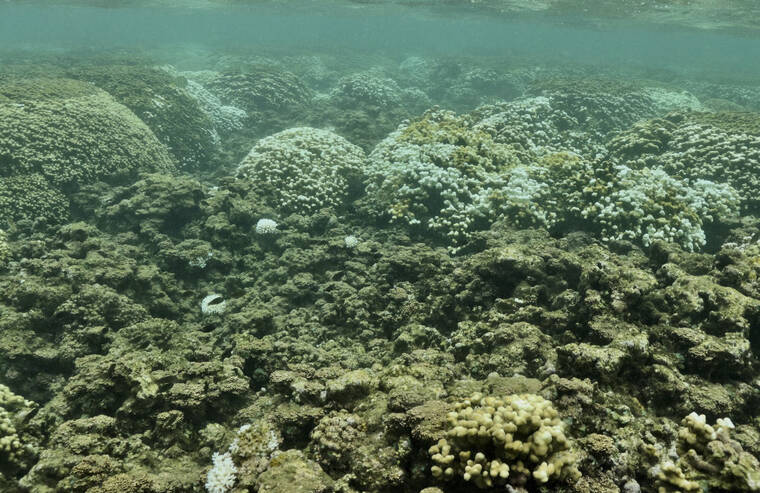The Center for Biological Diversity announced Thursday a coalition of 60 community leaders, conservation organizations, businesses, elected officials and academics has petitioned the federal government to ban three harmful, coral-killing chemicals from sunscreens and other personal care products. The petition cites scientific studies on the dangers to Hawaii’s coral reefs and coastal ecosystems posed by oxybenzone, octinoxate and octocrylene.
The petition, sent to the U.S. Food and Drug Administration, follows a similar 2018 petition by the Center for Biological Diversity seeking a ban on oxybenzone and octinoxate, which contribute to coral bleaching and death. Federal officials never responded to that petition, which could trigger additional legal actions.
In 2018, Gov. David Ige signed Senate Bill 2571 into law, making Hawaii the first place in the world to ban the sale and distribution of sunscreens that contain oxybenzone and octinoxate. Shortly thereafter Palau, the Florida Keys and the Virgin Islands passed similar chemical sunscreen bans. But without enforcement and a nationwide ban, the ocean’s imperiled coral reefs and marine life remain at risk, the groups say.
“The federal government can no longer shrug off these toxic chemicals that are deadly to coral, cause genetic damage to marine life and threaten overall reef health,” said Maxx Phillips, Hawaii director and a staff attorney at the Center. “People can protect their skin without harmful petrochemicals while the FDA protects public health and the environment.”
The petition was started by Island Green Living Association in the U.S. Virgin Islands and Lisa Bishop of Friends of Hanauma Bay, Cynthia Punihaole of The Kohala Center, and Ted Bohlen of the Hawaii Reef and Ocean Coalition. It asks federal officials to remove affected products from the marketplace and reclassify these chemicals as “Not Generally Recognized as Safe & Effective.”
“We hope the clear-cut science behind this petition, and strength of the coalition supporting it, convinces the FDA to take this critical step to protect public health, marine life and coral reefs,” Bishop said.
The three chemicals can foster viral infections in corals that hasten bleaching and death. Scientists estimate up to 14,000 tons of sunscreen lotion enter coral reefs around the world every year. The impact of sunscreen chemicals is stronger on vulnerable coral’s larvae.
Lab studies have shown that even a miniscule amount of oxybenzone in the water is toxic to corals. Just 62 parts per trillion — the equivalent of three drops mixed into an Olympic-sized swimming pool — has been found to damage coral larvae. Scientists have found high concentrations of oxybenzone in many areas popular with sunscreen-slathered tourists, including Waikiki Beach, the Florida Keys and the U.S Virgin Islands.
The Center says coral reefs are gravely threatened by ocean warming, ocean acidification, overfishing and pollution. In the past three decades, unusually warm waters have caused coral reefs around the world to experience unprecedented mass bleaching, the first step toward the death of these biologically rich and critically important marine ecosystems.
“With our landmark first-in-the-world legislation in 2018 banning the sale of sunscreens containing the harmful chemicals oxybenzone and octinoxate, we celebrated knowing at the time the law didn’t go far enough,” said Hawaii State Sen. Mike Gabbard. “Thousands of sunscreen products containing the ‘Toxic 3 Os’ are wreaking havoc on human health and our oceans worldwide. Hopefully, the FDA will see the urgency in taking the critical next step to recall these toxic products from the marketplace.”
Harith Wickrema, president of Island Green Living Association, and Joe DiNardo, a retired scientist and industry toxicologist, are the designated signatories for the coalition. Other Hawaii petitioners include State Sens. Mike Gabbard and Chris Lee, Hawaii Reps. Gene Ward and Nicole Lowen, Maxx Phillips of the Center for Biological Diversity and Pat B. Lindquist of the Napili Bay and Beach Foundation of Hawaii. Nearly 50 additional environmental organizations, community leaders, academics, businesses and members of the public were included in the petition.



